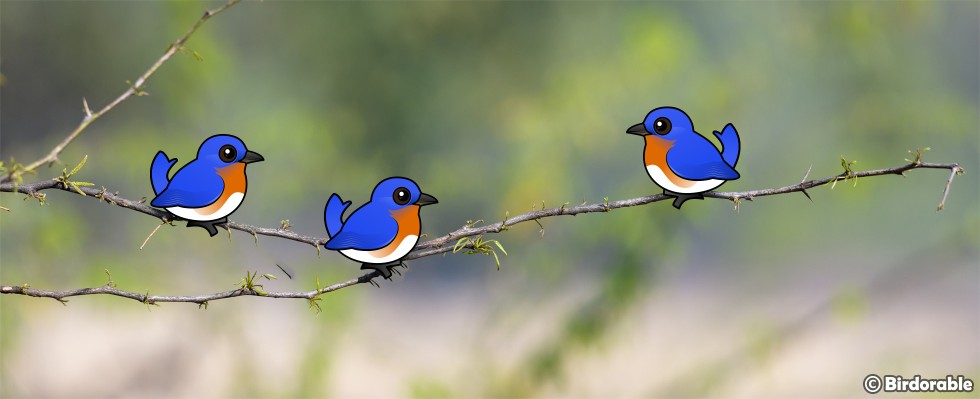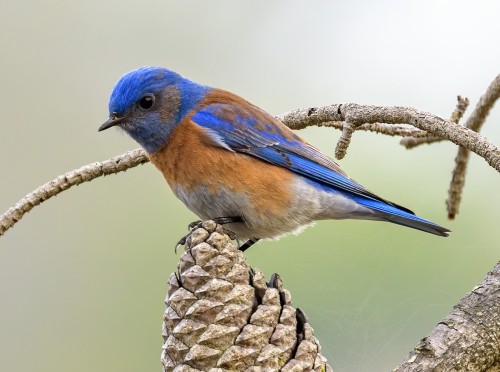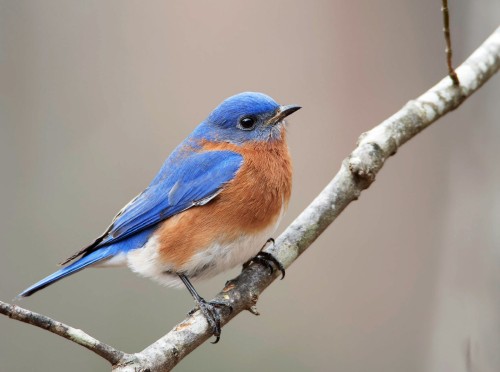Fascinating Facts About Bluebirds

Bluebirds are medium-sized songbirds in the thrush family. These familiar birds are much more than just beautiful backyard visitors – they boast a fascinating array of fun facts! Here are some FAQs about this small family of birds.
Three Different Bluebirds
There are three distinct species of bluebirds in North America: Eastern; Western; and Mountain. While all share the iconic blue coloration on the male's back and wings, females and juveniles have more muted tones of brown and orange.
Where Bluebirds Live
Eastern Bluebirds have the widest range of the three species, covering most of the eastern United States with some reach into both Canada and Mexico into Central America. Western Bluebirds, who are similar in appearance to their Eastern cousins, have a large range in the western part of the United States and Canada/Mexico. While these two species have little overlap in range, the range of Mountain Bluebirds overlaps with Westerns in several places.
What Bluebirds Eat
Bluebirds are insectivores, voracious insect eaters, consuming hundreds of insects daily, including beetles, caterpillars, and grasshoppers. This makes them valuable natural pest controllers for gardens and agricultural lands. Their keen eyesight and acrobatic skills allow them to catch insects on the fly or glean them from leaves and branches. Mountain Bluebirds even hover like hummingbirds on occasion to reach hidden prey!
Cavity Nesters
Bluebirds are cavity nesters, preferring existing holes in trees or birdhouses. They readily accept human-provided nesting boxes, making them easy birds to attract and observe in backyards. Bluebirds often raise two to three broods per season, with both male and female participating in nest building, incubation, and feeding the young.

Western Bluebird by Becky Matsubara (CC BY 2.0 DEED)

Eastern Bluebird by Rick from Georgia (CC BY 2.0 DEED)
Conservation
Bluebird populations faced significant decline in the 20th century due to habitat loss and competition from other cavity nesters. However, conservation efforts like nesting box programs have led to a heartening comeback in recent years.
Symbols of Hope
Bluebirds are often associated with happiness, optimism, and renewal. Their vibrant colors and cheerful songs bring joy to birdwatchers and nature enthusiasts alike. Have you heard of the Bluebird of Happiness? The bluebird as a harbinger of joy is found in several different cultures, including China and Europe.
Old Bluebirds
Eastern Bluebirds have a natural lifespan of 6 to 10 years. The oldest Eastern Bluebird was 10 years and 6 months old, known from bird banding records. This bird was banded in New York in 1989 and found dead in South Carolina in 1999. The longevity record for Western Bluebirds is 8 years and 8 months; for Mountain Bluebirds 9 years.
The Eastern Bluebird was added to Birdorable on August 5, 2007.
The Western Bluebird and Mountain Bluebird were both added to Birdorable on November 8, 2010.



















Comments
Leave a comment
Thank you!